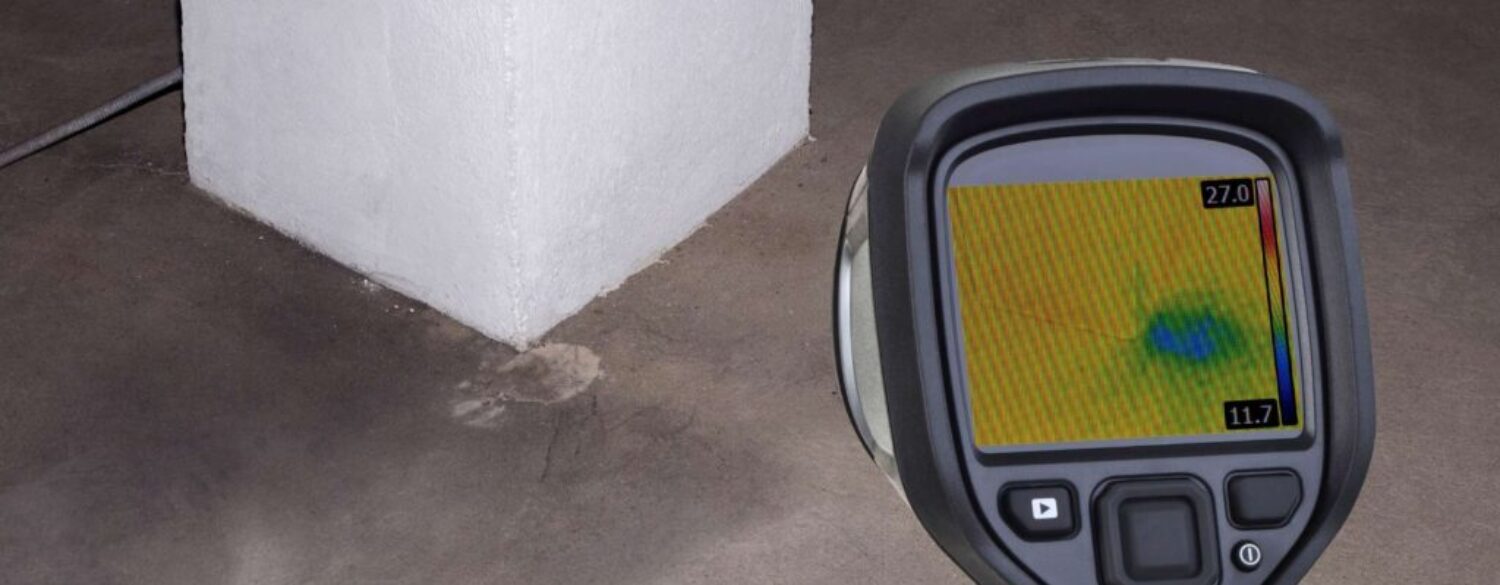Using Infrared to Uncover Issues
Did you know that in addition to tools like flashlights, ladders, and moisture testers, home inspectors also rely on the high-tech power of infrared to do their work? Infrared light is part of the electromagnetic spectrum and is invisible to the human eye, but we can sense it as heat. Infrared devices–like night-vision goggles and thermal imaging– are not like x-rays that “see through” solid materials; however, infrared technologies do show areas of hot and cold temperatures that can indicate common household issues.
Infrared technology is a key tool in the home inspector’s arsenal because it can identify problems inside your home–like moisture spots, temperature changes, or other structural defects–that you can’t see with your own eyes. Read on for more information about how home inspectors use infrared thermal devices to give you a more accurate picture of your home’s condition.
ENERGY LOSS
Your home inspector may use an infrared thermal imaging device to check for heating malfunctions and drafts that can increase your energy costs. The home inspector will check for temperature changesby taking measurements across an insulated wall, ceiling, or floor. Areas that are very hot will appear as white, bright red, orange or yellow; areas that are cold will appear as darker blue or black. The infrared imaging device will show any spots where there’s a significant amount of cold, which can indicate poor insulation, air sealing issues, problems with HVAC performance, and window and door issues.
MOISTURE
An infrared thermal imaging camera is also useful when identifying areas in the home that may have moisture damage. The home inspector will use the camera in places like bathrooms, basements, kitchens, and laundry rooms that have active water lines or appliances that use water. A thermal imaging moisture meter can help the inspector see mold and plumbing leaks that would otherwise go undetected with the naked eye. Locating these areas is integral to every home inspection because moisture can lead to structural deterioration and mold that can create an environment for insect infestation.
HOT SPOTS
Hot spots and overloaded wiring are other major issues that can’t be detected with the human eye but can be seen with the help of an infrared device. A home inspector will scan the device over circuit breakers and other electrical equipment to spot areas that go above a safe temperature range. Hot spots may be caused by faulty or malfunctioning electrical circuits, wires, or outlets. Issues with faulty or overheated electrical systems can lead to fires, so it’s integral that your home inspector identifies these problems early on.
PEST ISSUES
You may not see them, but it’s possible that your home is being shared with non-human visitors. Nests hosting rodents, raccoons, and other pests generate heat, so an infrared imaging device can identify hot spots where these unwanted creatures are living. A home inspector will scan walls and ceilings in basements and attics to locate areas where spots of warmth can indicate animal nests. Identifying these areas is critical because some animals can chew through insulation, and others, like termites, can destroy wood structural elements of your home.
South Sound Inspections uses the latest technologies–including infrared thermal imaging–to give you the most accurate picture of your home’s condition. Visit South Sound Inspections today to learn more about our services.



